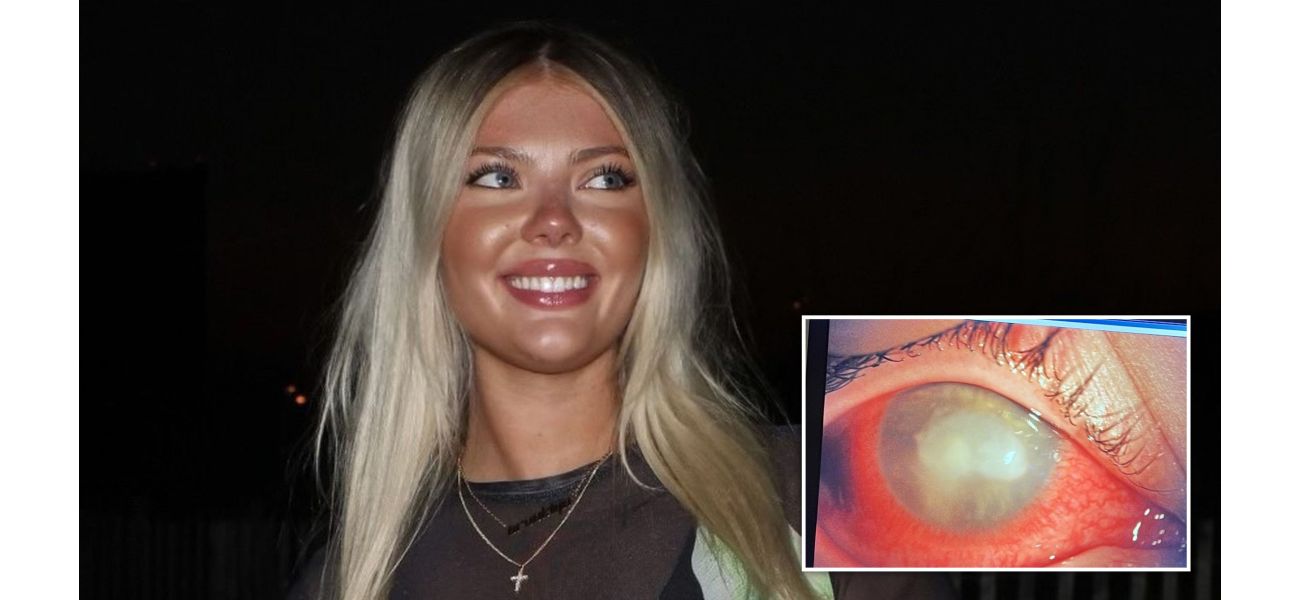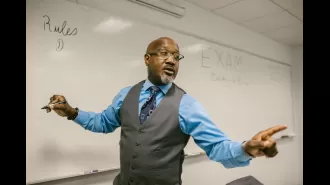Contact lens mixup leads to blindness as parasites take over woman's eye
A 23-year-old described experiencing excruciating pain.
October 26th 2024.

Brooklyn McCasland recently shared her harrowing experience of contracting a nasty infection while on a beach holiday with friends. What started as a fun getaway turned into a nightmare when she returned home with excruciating pain in her right eye.
At first, doctors dismissed her symptoms as a simple case of sand getting into her eye. But the pain persisted for weeks and Brooklyn's vision began to blur. Concerned, she visited a specialist who made a shocking discovery - parasites had burrowed into her cornea.
Brooklyn recalls the pain being the worst she had ever felt and regrets not taking the necessary precautions to prevent it. As a barista, her job requires a keen sense of depth perception, which has been severely impaired due to her condition. She has had to quit her job as working in a well-lit café has become nearly impossible.
The parasite responsible for her condition, acanthamoeba, is commonly found in water and can enter the eye through microscopic tears. These parasites are about 5,000 times smaller than the width of a human hair, making them difficult to detect and treat.
Currently, Brooklyn is waiting for an expensive transplant that only has a small chance of restoring her sight. She recalls feeling frustrated and helpless when doctors were unable to diagnose her condition for weeks. It was only after travelling four hours to see a specialist that she finally received a proper diagnosis.
Brooklyn is now urging other contact lens wearers to be cautious when using them in water. She was shocked to find out that her doctors had initially told her it wasn't a big deal to shower with contact lenses in, despite her now knowing the consequences firsthand.
If caught early enough, doctors can prescribe eye drops to kill the parasites. However, in more severe cases, surgery is required. This involves scraping the outer layer of the eye to remove the parasites and repairing the affected area through a transplant.
Brooklyn's story serves as a cautionary tale for anyone who wears contact lenses. She hopes that by sharing her experience, others will avoid going through the same pain and suffering. As she awaits her transplant, she remains hopeful and grateful to finally have a proper diagnosis after months of uncertainty and agony.
At first, doctors dismissed her symptoms as a simple case of sand getting into her eye. But the pain persisted for weeks and Brooklyn's vision began to blur. Concerned, she visited a specialist who made a shocking discovery - parasites had burrowed into her cornea.
Brooklyn recalls the pain being the worst she had ever felt and regrets not taking the necessary precautions to prevent it. As a barista, her job requires a keen sense of depth perception, which has been severely impaired due to her condition. She has had to quit her job as working in a well-lit café has become nearly impossible.
The parasite responsible for her condition, acanthamoeba, is commonly found in water and can enter the eye through microscopic tears. These parasites are about 5,000 times smaller than the width of a human hair, making them difficult to detect and treat.
Currently, Brooklyn is waiting for an expensive transplant that only has a small chance of restoring her sight. She recalls feeling frustrated and helpless when doctors were unable to diagnose her condition for weeks. It was only after travelling four hours to see a specialist that she finally received a proper diagnosis.
Brooklyn is now urging other contact lens wearers to be cautious when using them in water. She was shocked to find out that her doctors had initially told her it wasn't a big deal to shower with contact lenses in, despite her now knowing the consequences firsthand.
If caught early enough, doctors can prescribe eye drops to kill the parasites. However, in more severe cases, surgery is required. This involves scraping the outer layer of the eye to remove the parasites and repairing the affected area through a transplant.
Brooklyn's story serves as a cautionary tale for anyone who wears contact lenses. She hopes that by sharing her experience, others will avoid going through the same pain and suffering. As she awaits her transplant, she remains hopeful and grateful to finally have a proper diagnosis after months of uncertainty and agony.
[This article has been trending online recently and has been generated with AI. Your feed is customized.]
[Generative AI is experimental.]
0
0
Submit Comment





